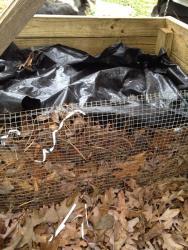Becky, I'll chime in one last time.
1) I've never added lime to my bins. It seems that if you stay away from citrus (of couse you're in Florida ) the worms can control the ph without any help. I have read some citrus is ok but not large amounts.
2) I use regular soil from around my home for the grit. I only added about a cup or so when I established my bins.
Also, I'm too lazy to pulverize my food that I add to the bin. I just throw whole pieces in and it turns into a slimy mess after a few days. They love melon and my kids eat a lot of watermelon. I just cut the rinds up in smaller pieces and by the end of the week it has broken down and puts off a lot of liquid. This is why I keep dry shredded paper on top of the food. It does a great job of controlling the fruit flies and within a month the dry paper has become moist. The paper seems to be pulled down into the worms as if they are controlling the moisture level themselves.
Here is a great source of information :
http://www.bae.ncsu.edu/topic/...
At the bottom of the page under resources their is a document titled " worms can recycle your garbage" which opens a pdf pamplet with a lot of information. I trust this information as this lady (Rhonda Sherman) travels all over the world teaching about vermicomposting and works for a university extension service.
Good luck !
